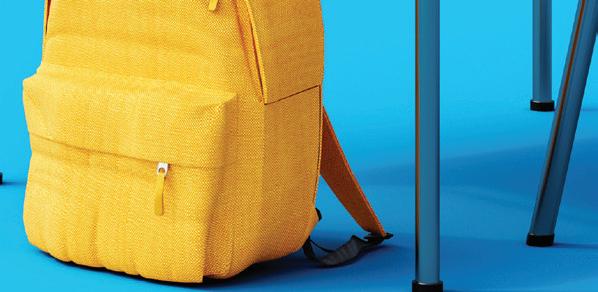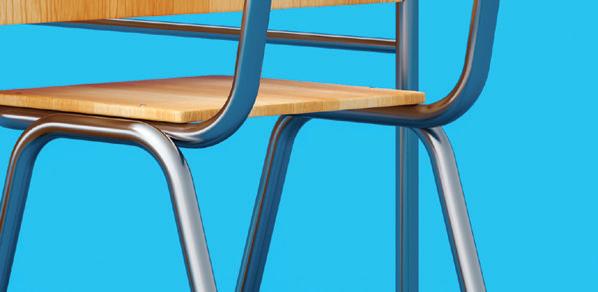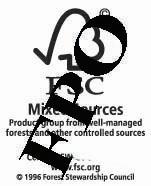Mot ivated to




















Staci M. Zolkoski • Calli Lewis Chiu • Mandy E. Lusk Decreasing Challenging Student Behaviors & Increasing Academic Engagement
Decreasing Challenging Student Behaviors & Increasing Academic Engagement
Staci M. Zolkoski • Calli Lewis Chiu • Mandy E. Lusk
© 2023 by Solution Tree Press
Copyright © 2023 by Solution Tree Press
Materials appearing here are copyrighted. With one exception, all rights are reserved. Readers may reproduce only those pages marked “Reproducible.” Otherwise, no part of this book may be reproduced or transmitted in any form or by any means (electronic, photocopying, recording, or otherwise) without prior written permission of the publisher.
555 North Morton Street Bloomington, IN 47404 800.733.6786 (toll free) / 812.336.7700
FAX: 812.336.7790
email: info@SolutionTree.com SolutionTree.com
Visit go.SolutionTree.com/behavior to download the free reproducibles in this book. Printed in the United States of America
Library of Congress Cataloging-in-Publication Data
Names: Zolkoski, Staci M., author. | Chiu, Calli Lewis, author. | Lusk, Mandy E., author.
Title: Motivated to learn : decreasing challenging student behaviors and increasing academic engagement / Staci M. Zolkoski, Calli Lewis Chiu, Mandy E. Lusk.
Description: Bloomington, IN : Solution Tree Press, [2022] | Includes bibliographical references and index.
Identifiers: LCCN 2022015754 (print) | LCCN 2022015755 (ebook) | ISBN 9781952812835 (Paperback) | ISBN 9781952812842 (eBook)
Subjects: LCSH: Classroom management--United States. | Behavior modification--United States. | Motivation in education--United States. | Teacher-student relationships--United States. | Education--Research--United States.
Classification: LCC LB3013 .Z65 2022 (print) | LCC LB3013 (ebook) | DDC 371.102/4--dc23/eng/20220713
LC record available at https://lccn.loc.gov/2022015754
LC ebook record available at https://lccn.loc.gov/2022015755
Solution Tree
Jeffrey C. Jones, CEO
Edmund M. Ackerman, President
Solution Tree Press

President and Publisher: Douglas M. Rife
Associate Publisher: Sarah Payne-Mills
Managing Production Editor: Kendra Slayton
Editorial Director: Todd Brakke
Art Director: Rian Anderson
Copy Chief: Jessi Finn
Production Editor: Kate St. Ives
Content Development Specialist: Amy Rubenstein
Acquisitions Editor: Sarah Jubar
Copy Editor: Jessi Finn
Proofreader: Elisabeth Abrams
Cover Designer: Abigail Bowen
Text Designer: Julie Csizmadia
Associate Editor: Sarah Ludwig
Editorial Assistants: Charlotte Jones and Elijah Oates
© 2023 by Solution Tree Press
We dedicate this book to Dr. Lyndal M. Bullock. His leadership and advocacy for students with emotional and behavior disorders continually inspire our teaching.
© 2023 by Solution Tree Press
© 2023 by Solution Tree Press
Table of Contents
Reproducibles are in italics.
About the Authors
Introduction
CHAPTER 1
Why Students Exhibit Challenging Behaviors and How These Behaviors Impact Academic Engagement
Nurture
Family
Community
Teachers and Schools
Peers and Peer Groups
Nature
Challenging Behaviors and Academic Achievement
Obstacles and Approaches to Effectively Addressing Challenging Behaviors
Maintained Consequences
Learned Helplessness
The Blame Game
Matters of Mindset
Preventive Approaches to Challenging Behaviors
Positive Behavior Interventions and Supports
Cultural Responsiveness
Concluding Thoughts
1: Questions for Reflection
| vii
xi
1
5
6
7
8
12
14
15
17
18
18
19
20
24
26
26
30
32 Chapter
33
© 2023 by Solution Tree Press
CHAPTER 2
Students Would Like a Choice:
A Guide to Providing Choices
How to Implement Choice
Collect Data
Consider Cultural and Linguistic Diversity
Involve Students in Choice Selection 42
Review Ideas for Reinforcement
Examples of How to Utilize Choice
Concluding Thoughts
Chapter 2: Questions for Reflection
CHAPTER 3
It’s All About the Reward: A Guide to Token Economies
How to Implement a Token Economy
Determine the Components of Schoolwide, Classwide, and Individualized Token-Economy Systems
Consider Cultural and Linguistic Diversity 62
Incorporate Student Interests in Implementation 64
Teach the Token-Economy System 65
Review Ideas for Reinforcement 66
Examples of How to Utilize a Token Economy
Concluding Thoughts
Chapter 3: Questions for Reflection
CHAPTER 4
Set Students Up for Success:
A Guide to High‑Probability Sequencing
How to Implement High-Probability Sequencing
Collect Data to Identify High- and Low-Probability Requests
Identify Specific Reinforcements to Use During HighProbability Sequencing
Deliver High-Probability Requests With Specific Reinforcement After Each Request in Rapid Succession
Collect Data to Determine Whether High-Probability Sequencing Is an Effective Intervention
Consider Cultural and Linguistic Diversity
Incorporate Student Interests
Examples of How to Utilize High-Probability Sequencing
Concluding Thoughts
Chapter 4: Questions for Reflection
MOTIVATED TO LEARNviii |
35
37
37
41
45
47
51
53
55
57
59
70
72
73
75
76
78
78
79
80
81
82
83
86
87 © 2023 by Solution Tree Press
CHAPTER 5
Teamwork Makes the Dream Work:
A Guide to Classwide Peer Tutoring 89
How to Implement Classwide Peer Tutoring 91
Analyze Assessment Data 92
Pair Students and Develop Teams 93
Determine Reinforcements With the Class 93
Consider Cultural and Linguistic Diversity 94 Model the Classwide Peer-Tutoring Process for Students 94
Implement and Monitor the Peer-Tutoring Process 96
Examples of How to Utilize Classwide Peer Tutoring 102
Concluding Thoughts 105
Chapter 5: Questions for Reflection
CHAPTER 6
Put the Students in Charge:
A Guide to Self ‑ Monitoring 109
How to Implement Self-Monitoring 112
Determine the Goals 113
Develop the Rating System 114 Teach Scoring Procedures 115
Review Ideas for Reinforcement 118
Consider Cultural and Linguistic Diversity 119 Incorporate Student Interests 120
Examples of How to Utilize Self-Monitoring 125
Concluding Thoughts 125
Chapter 6: Questions for Reflection
CHAPTER 7
Call on Students:
A Guide to Opportunities to Respond 129
How to Implement Opportunities to Respond 131
Determine the Current Rate of Opportunities to Respond 132
Develop a Plan to Increase Opportunities to Respond 133
Implement the Action Plan 133
Monitor and Adjust the Plan as Necessary
Review Ideas for Reinforcement 136
Consider Cultural and Linguistic Diversity 136 Incorporate Student Interests 138
Examples of How to Utilize Opportunities to Respond 138
Concluding Thoughts 140
Chapter 7: Questions for Reflection 142
Table of Contents | ix
107
127
134
© 2023 by Solution Tree Press
CHAPTER 8
Remember What You Talked About:
A Guide to Precorrection 145
How to Implement Precorrection 147
Identify the Context and Predictable Challenging Behaviors 149
Define the Desired Behaviors 149
Adjust the Environment to Promote Student Success 150
Provide Opportunities for Students to Practice Desired Behaviors 151
Provide the Preferred Reinforcement When Students Engage in the Desired Behaviors 151
Develop a Plan for Prompting Students to Engage in the Preferred Behaviors 152
Create a Progress-Monitoring Plan to Determine the Precorrection Plan’s Effectiveness 152
Consider Cultural and Linguistic Diversity 154
Examples of How to Utilize Precorrection 157 Concluding Thoughts 158
Chapter 8: Questions for Reflection 160
Epilogue 163
APPENDIX
Resources for Teachers 165
Chapter 1: Challenging Behaviors 165
Chapter 2: Providing Choices 166 Chapter 3: Token Economies 167
Chapter 4: High-Probability Sequencing 168
Chapter 5: Classwide Peer Tutoring 169
Chapter 6: Self-Monitoring 170
Chapter 7: Opportunities to Respond 172
Chapter 8: Precorrection
References and Resources
Index
MOTIVATED TO LEARNx |
172
175
185 © 2023 by Solution Tree Press
About the Authors
Staci M. Zolkoski, PhD, is an associate professor of special education at the University of Texas at Tyler (UT Tyler). Prior to working at the collegiate level, Dr. Zolkoski taught kindergarten and fourth grade. She teaches classroom management at the undergraduate and graduate levels as well as courses in special education, behavior disorders, and educational strategies. She has won the Kappa Delta Pi International Honor Society Teacher of the Year award for the UT Tyler School of Education two times and for the UT Tyler College of Education and Psychology one time.
Dr. Zolkoski is a member of the Council for Exceptional Children as well as an active member of the Division for Emotional and Behavioral Health (DEBH), where she serves on the publications and professional development committees. She is the treasurer of the DEBH Foundation and the editor of the DEBH news letter, Behavior Today. Dr. Zolkoski has presented and published her research on resilience and social-emotional learning at the national and international levels. She has worked with local school districts to implement social-emotional learning and has trained teachers and schools in social-emotional learning and classroom management. Dr. Zolkoski has also presented for ElevateTXEd, which is a collabo rative effort across the University of Texas System.

| xi
© 2023 by Solution Tree Press
Dr. Zolkoski earned her bachelor’s degree in early childhood education from the University of Toledo in Ohio. She earned her master’s degree and doctorate in special education with an emphasis on behavior disorders from the University of North Texas.


Calli Lewis Chiu, PhD, is an associate professor in the Department of Special Education at California State University, Fullerton (CSUF). Before joining CSUF in 2018, she was an assistant professor at California State University, Bakersfield and Shippensburg University. Prior to entering academia, Dr. Lewis Chiu was a special education teacher for ten years and worked as a direct care service provider for adolescents in foster care. Her teaching expertise is instruction for children and youth with emotional and behav ioral disorders. She has numerous publications and presentations related to improving outcomes for students with emotional and behavioral disorders and increasing cultural competence among preservice teachers.
Dr. Lewis Chiu holds a bachelor of fine arts in art education from Texas Tech University, a master of education with an emphasis on multicultural issues in special education from the University of Texas at Austin, and a doctorate with an emphasis on emotional and behavioral disorders in special education from the University of North Texas.
Mandy E. Lusk, PhD, is a lifelong special educator who serves as an associate professor of special education at Clayton State University. As a special education practitioner for numerous years, Dr. Lusk predominantly taught students of all ages with emotional and behavioral disorders across the United States. She worked at Wichita State University and then started a special education certification program at Clayton State University. Dr. Lusk’s research agenda includes preparing teachers to effectively educate diverse learners with challenging behaviors.
Dr. Lusk earned her undergraduate degree in special education and master’s degree in students with behavior disorders from Mississippi State University. She earned a doctorate focused on students with behavior disorders from the University of North Texas.
To book Staci M. Zolkoski, Calli Lewis Chiu, or Mandy E. Lusk for professional development, contact pd@SolutionTree.com.
MOTIVATED TO LEARNxii |
© 2023 by Solution Tree Press
Introduction
“Jarrod is a seventh grader—I don’t know what to do about him! He is all over the place. He touches other students’ stuff and disrupts their concentration. He refuses to finish his classwork and hinders others from finishing theirs.”
“When I tell Sasha, an eleventh grader, what class assignment to do, I’m ignored. When I repeat myself, I’m ignored again. So, I repeat myself yet again and tell her that if she doesn’t answer, I’m sending her to the office. She gets up and leaves. I want compliance.”
“Derek, a second grader, will begin his independent mathematics assign ment, but he often wants me to sit with him to complete it. He is capable of completing the work on his own; however, he lacks the motivation to finish it independently.”
We (Staci, Calli, and Mandy) are aware that many of you, as teachers, can relate to these student scenarios. We understand that students with challenging behaviors can negatively alter your school day and perhaps even your outlook on teaching. Each of us has been in that place of discouragement. We’ve spent long nights review ing the cumulative folders of students who display problematic behaviors, trying to
| 1
© 2023 by Solution Tree Press
find the solution to their issues. We have tried sympathizing with these students one week and taking a sterner approach the next. We have exhausted ourselves search ing on our computers for research findings and strategies that we can immediately implement for these students, knowing that a basic internet search is unlikely to give us the professional or research-based answers we need.
The following snapshots come from our experiences as teachers struggling and eventually—through learning, developing, and implementing new strategies— succeeding in addressing challenging behaviors students have brought to our classrooms.
Staci reflects:
My teacher-preparation program included a few courses in special edu cation but no courses in classroom management Although I was a gen eral education kindergarten and fourth-grade teacher, each year, I had several students with disabilities as well as some very active students who some would call the “problem students ” I found that I loved work ing with these students because I could tell they were good kids but misunderstood Providing them a little bit of encouragement and being their champion made their faces light up, and they began to talk to me more I could tell I was making a difference even though I wasn’t really doing much but showing them I cared about them and their education This was something, but I wanted to do more I constantly looked for strategies to help my students be successful I went back to school to get my master’s degree in special education with an emphasis on behavior disorders
As I was finishing my degree, I moved from kindergarten to fourth grade, and that’s when I met a student named Cody . I got an earful of negative information from his previous teacher but did not let it scare me away He was a tough student He had built walls from his years of adverse experiences and often came across as defensive His parents, particularly his mom, were abrasive
I was excited to put my training to use, thinking I was magically going to make his school experience better overnight, and boy, did he prove me wrong! Through persistence, I began to develop positive relationships with Cody and his parents by getting to know all of them; I even went to his football games C hanging years of negative experiences takes time, even with the best strategies in place The road was often bumpy, but Cody and his family knew I cared about him and wanted him to be
successful Years later, I got a message from Cody and his mom telling me that being in my classroom had changed his schooling experience and helped him continue on even though he still did not always have the best school experiences after leaving my class He is currently in the U S Army Infantry
MOTIVATED TO LEARN2 |
© 2023 by Solution Tree Press
Calli recalls:
I didn’t have a single classroom-management or behavior-management course in my teacher-preparation program Needless to say, I entered my first year of teaching completely unprepared to navigate students’ challenging behaviors I remember asking my colleagues for advice and being told more than once to put some type of reward system in place . I remember thinking, Nope! The students should know how to behave. I struggled for a couple of years and then started paying attention to what was happening in classes that flowed smoothly, and I finally started implementing the strategies you’ll find in this book There was a lot of trial and error, but I got it! In my last year of teaching before I left to pursue my PhD, my middle schoolers were working on a draft of their essay when my assistant principal opened my classroom door, stuck his head inside, and whispered to me, “Oh, sorry! I didn’t know they were testing!” I replied, “They aren’t They’re just all on task!”
And Mandy remembers:
Several years into teaching, I met Virgie I thought I was well prepared, or even overprepared, for a student like Virgie After all, I had earned two degrees in special education (a bachelor’s degree in special education and a master’s degree in behavior disorders) I was wrong Virgie, a sixthgrade student, lived with his single mother, his younger sister, and his mom’s continuingly shifting social circle and unstable relationships, which disrupted his home environment His eyes revealed his anger for life and disdain for school . I took his anger personally more times than I care to admit His apathy seemed directed specifically at me I often wondered if taking directives from a female teacher was difficult for him due to his troubled relationship with his mother He didn’t seem to respond the same way to male paraprofessionals in our classroom
I could count at least five tier 1 and tier 2 positive behavior interventions and supports (PBIS) practices implemented within our classroom that were structured for student success I perceived that the other students in my classroom responded positively to these tiered strategies; how ever, Virgie did not He would sit at his desk, shout profanities, taunt his peers, and refuse to work I asked myself hundreds of times a day, “How can these interventions not work?” The situation seemed hopeless After working with me for two years, Virgie finally made strides with one of the evidence-based practices that we will be discussing in this book
After twenty-plus years each of teaching in classrooms, and after years of training to work with individuals who behave in challenging ways, we know how difficult it is to motivate and engage students who exhibit resistant and even hostile behaviors. And we know how difficult it is to learn how to address these behaviors through a slow and sometimes confusing process of trial and error. It’s even more frustrating when you lack adequate strategies to bring positive change to this difficult work. These are the
Introduction | 3
© 2023 by Solution Tree Press
reasons why we wrote this book for you, novice and veteran K–12 teachers. Through practical, evidence-based, culturally responsive, and easy-to-implement strategies, we provide you the tools you need to address the challenging behaviors in your classroom so that you can spend your energy developing engaging lessons and building positive relationships with all your students. While you may have heard of the strategies in this book’s eight chapters, or you may be familiar with some of them, we provide specific guidance to make sure you understand how to implement each strategy with fidelity and guarantee the best outcomes for you and your students.
Chapter 1 begins with an examination of factors that can contribute to challeng ing behaviors in students. We look at environmental factors stemming from aspects of students’ nurturing, such as their family, community, teachers, and peers, and we look at the role genetic predisposition might play. Next, we consider unproduc tive reactions to challenging behaviors; these reactions of both the students themselves and the adults in the students’ lives include developing learned helplessness and ascribing blame for students’ challenging behaviors rather than addressing the behaviors. We then pair this consideration of unproductive reactions with productive behaviors and mindsets that help lay a foundation for effectively implementing the seven evidence-based strategies that make up the core of this book.
Chapters 2–8 encompass the seven strategies themselves: (1) student choice, (2) token economies, (3) high-probability sequencing, (4) classwide peer tutoring, (5) self-monitoring, (6) opportunities to respond, and (7) precorrection. Each chap ter provides detailed guidance on the strategy it addresses, ideas for reinforcing the strategy, culturally responsive practices related to the strategy, tips for incorporat ing student interests into strategy implementation, and problem-solving tips for the strategy. A fictional scenario based on real-life school and student situations is also woven throughout each chapter to illuminate the issues and strategy the chapter addresses. Chapters close with a Concluding Thoughts section and a “Questions for Reflection” reproducible that invites readers to write in the spaces provided and in doing so envision themselves implementing the chapter’s strategies, confronting challenges, exploring benefits, and so on. This book includes additional reproducible templates of helpful figures and an appendix of print and online resources that are linked to each chapter’s content.
We offer this book as a comprehensive resource for any educator looking for guidance on working with students who have challenging behaviors. It will give you a wealth of tools and the flexibility of a toolbox, wherein you may move about the chapters in the order that works for you, choosing the strategies that fit your needs. When you finish reading, you will be able to motivate all students to engage in academic work.
MOTIVATED TO LEARN4 |
© 2023 by Solution Tree Press
Chapter 1
Why Students Exhibit Challenging Behaviors and How These Behaviors Impact Academic Engagement
Myra is a fourth grader who enjoys reading tween comedic books and playing with her friends. She is kind and calm. She is in the gifted pro gram at school. Her brother, George, is a third grader at the same school who enjoys anything related to sports and mathematics. He is vivacious, assertive, and hysterical. He is currently in special education for specific learning disabilities in reading and challenging behaviors. Myra has many friends at school. George struggles with interpersonal skills, so he is unable to sustain friendships. He often tags along with Myra to social events at school. The two siblings are inseparable. Even though they are being raised in the same home environment by two supportive and consistent parental figures—(1) their single mom and (2) their maternal grandmother—they respond to authority very differently. George often displays challenging behaviors, yelling at his peers and teachers and clenching his fists when he is given directives that he doesn’t like.

| 5
© 2023 by Solution Tree Press
Think about your current and past students. Have you ever had a student exhibit behaviors like George’s? What behaviors in your classroom are most frustrating for you? What problematic behaviors do you find yourself addressing over and over with your students? These behaviors may include being physically or verbally aggressive, bullying others, leaving a designated area, damaging property, being tardy to class, or throwing tantrums, to name a few. Challenging behaviors are defined as behav iors that are culturally or socially inappropriate (Emerson, 1995). Teachers need to address these behaviors because they can have an array of adverse consequences. Typically, in the classroom, behaviors are considered challenging when they pre vent the student and his, her, or their peers from learning academically and socially (Scott, 2017).
Identifying the factors that may be contributing to students’ challenging behaviors can lead you to develop effective intervention and prevention strategies for the students. So it is helpful to think about why students behave in these challenging ways.
Many factors can directly or indirectly influence student behaviors. This chapter begins by looking at various causal factors, which can be divided into two broad cat egories: (1) nurture and (2) nature. While no conclusive evidence indicates one factor is directly responsible for challenging behaviors (Hallahan, Kauffman, & Pullen, 2019; Yell, Meadows, Drasgow, & Shriner, 2013), a student like George from the opening scenario may be predisposed to exhibit problematic behaviors based on some factors, and other factors may trigger the behaviors in him. Meanwhile, Myra, for instance, does not experience this. The chapter then examines the relationship between challenging behaviors and academic achievement. Next, it delves into com mon obstacles teachers may face in approaching challenging behaviors and effective approaches teachers can use to counter these obstacles. The chapter also sets the foundation for the strategies in the book by articulating how preventive measures, positive behavior interventions and supports (PBIS), and cultural responsiveness undergird each of the following strategies. Last, this chapter wraps up with a Concluding Thoughts section and a reproducible page that includes reflective questions to pon der. The chapter will revisit the George and Myra scenario throughout to make the concepts of the chapter visible within an imaginary school context.
NURTURE
Nurture pertains to environmental influences and how they affect the way a per son acts (Stiles, 2011). People’s environment, upbringing, and life experiences con dition them to act a specific way. In other words, people can learn behavior, and the environmental factors that affect an individual contribute to how adaptive or maladaptive that individual’s behaviors are, particularly within a social context like
MOTIVATED TO LEARN6 |
© 2023 by Solution Tree Press
Why Students Exhibit Challenging Behaviors and How These Behaviors Impact Academic Engagement
school. Four primary sources of importance can offer or withhold the nurturing care that may be critical for a student to successfully function both within school and throughout life. These sources are (1) family, (2) community, (3) teachers and schools, and (4) peers and peer groups.
Family
The principal characters of the film Lilo & Stitch state simply, “Ohana means fam ily. Family means nobody gets left behind or forgotten” (Sanders & DeBlois, 2002). In a perfect world, all students’ families would be safe havens focused on the welfare of children. But research shows how parenting varies considerably and parenting behaviors contribute as protective or risk factors for behavior problems (White & Renk, 2012).
According to education researchers and authors James M. Kauffman and Timothy J. Landrum (2018), the following are the primary functions of any family with children.
• Protect children and provide care.
• Regulate children’s behavior.
• Pass on essential knowledge and skills for understanding and navigating the physical and social world.
• Help shape and guide interactions and relationships.
• Facilitate children’s understanding of themselves.
In reality, parents’ supportiveness ranges from rejecting and unresponsive to warm and responsive. When families exhibit a lack of support and nurturing characteris tics, their children may demonstrate challenging behaviors. Specifically, low support iveness from parents is associated with poor psychological (for example, mental and emotional) outcomes that start in childhood and may continue to impact children later in their lives (Brumariu & Kerns, 2010).
Children living in adverse conditions (for example, physical or emotional neglect) in early childhood (birth to fifty-four months) will enter school at a disadvantage that leads to a greater possibility of school failure later in their lives. This is especially true for children who experience multiple risk factors over a long period of time (Sektnan, McClelland, Acock, & Morrison, 2010). Individuals in the family may also increase a child’s chances of developing challenging behaviors if these family members are dealing with family conflict, are navigating a family history of mental illness, are neglectful or abusive, are harsh and inconsistent with discipline, or are struggling with addiction (Hallahan et al., 2019).
| 7
© 2023 by Solution Tree Press
Let’s imagine that instead of being a source of consistent support, as she is in the scenario that opens this chapter, Myra and George’s mom battles debilitating chronic depression. Her mother, the siblings’ grandmother, lives with the family to help when the mom is unable to provide the care that the children need (that is, help with regularly served, nutritious meals; help getting ready for school; and help with home work after school). Myra and George live within an environment that offers love and, in many ways, consistency and support. But the depression that their mother struggles with represents a stressor and is a likely factor—though not the only one— contributing to George’s challenging behaviors. While this imagined addition to the introductory scenario makes explicit the ways a parent may not be available to meet physical needs, the parent may also not be available emotionally. Emotional unavail ability can lead to perceived rejection, internalizing behaviors (for example, anxiety), and externalizing behaviors (for example, aggression) in children and adolescents. Parents who lack warmth or who display overprotection may also promote children’s risk for internalizing and externalizing behavior challenges (White & Renk, 2012).
Parents and other family members have the capability to promote prosocial behaviors that protect against risk factors for children’s challenging behaviors (White & Renk, 2012). Nurturing and supportive parents, family stability, and consistent dis cipline are factors that can lower risk and foster prosocial behaviors (Hallahan et al., 2019).
Educators are on the front lines interacting with students and the dynamics of their families daily. When it comes to challenging behaviors in students, don’t forget the importance of supporting families (Hallahan et al., 2019). The National Federation of Families (www.ffcmh.org) has a fantastic website full of resources to support families. Most parents of children who have challenging behaviors, like George, want them to act more appropriately and will do anything to help them be successful. Rather than criticizing or blaming parents, educators need to act from a place of empathy and support. Parents need teachers to listen to them with an open mind. When parents and teachers work together, students are more successful.
Community
When you think about students, it helps to consider the community in which you teach. Is there plenty of green space? Do people have easy access to grocery stores? Is the community safe? Maybe the community in which you teach is the opposite of those ideals—a densely packed population, a concentrated number of fast-food restaurants and convenience stores with little fresh produce, and high levels of crime. The effects of class discrimination directly impact students in ways that manifest in their school performance (Gorski, 2018).
MOTIVATED TO LEARN8 |
© 2023 by Solution Tree Press
Why Students Exhibit Challenging Behaviors and How These Behaviors Impact Academic
Consider green space, for example, which is often plentiful in wealthy neighbor hoods. Research consistently supports that students who have access to nature have lower stress levels, fewer challenging behaviors, reduced symptoms of attention deficit disorder (ADD), and higher standardized test scores than students who have limited access to nature (McCormick, 2017).
Students who grow up in neighborhoods with limited resources face overwhelm ing challenges that their peers in affluent neighborhoods do not encounter (Jensen, 2009). Communities where students are regularly exposed to threats to their health and safety and to chronic and acute stress can serve as obstacles to strong school per formance. In communities with low financial resources, there is often a higher prevalence of inadequate housing, poor health care, depression, and teen motherhood. In his book Teaching With Poverty in Mind , author and educator Eric Jensen (2009) says families that experience these factors can demonstrate a decreased capacity for sensitivity toward infants and young children, which can in turn manifest as poor academic performance and challenging behavior in students.
Consider this high-stakes factor that more commonly occurs in lowersocioeconomic-status (lower-SES) neighborhoods than in affluent areas: violence. Research supports that direct and indirect exposure to violence distresses students, negatively impacts their mental health and academic performance, and can lead to anxiety and aggression (Ozer, Lavi, Douglas, & Wolf, 2017). Regarding the rela tionship between what happens in a school and what happens in the surround ing community, violence in neighborhoods can have ripple effects among students (Burdick-Will, 2018). When students live with high levels of neighborhood violence, the schools can experience more disciplinary problems, students and teachers can feel less safe, and according to sociology and education researcher Julia Burdick-Will (2018), students have reported feeling less trust in their teachers.
Children and youth can display anxiety and aggression when they feel hypervig ilant about perceived threats, and this hypervigilance can become a child’s default state when living with neighborhood violence. Students who live in a neighborhood where violence is a regular occurrence may incorrectly interpret others’ actions as hostile due to unconscious responses to fear and stress. Burdick-Will (2018) finds that adolescents who experience neighborhood violence may resort to using aggression to keep others in their neighborhood from bothering them.
Students who are reacting to their environments may not be inclined to engage in violent behavior, yet their peers, classmates, and teachers could misinterpret their actions. A cycle of misunderstanding can develop in which those in the classroom feel less safe and relationships between students and teachers deteriorate.
Engagement | 9
© 2023 by Solution Tree Press
To reverse the complicated dynamics that can evolve between teachers and stu dents of different socioeconomic statuses, teachers must focus not on the student as the problem but on their own practices as catalysts to support students. Teachers can support their students by drawing on their strengths and meeting them where they are (Gorski, 2018). Likewise, it is crucial that teachers conceptualize neighborhoods with large numbers of families living below the poverty line as more than collections of poor people (Milner, Cunningham, Murray, & Alvarez, 2017). Teachers should observe the ways in which students navigate and persist despite obstacles associ ated with poverty and learn about various supports they receive from their families and communities.
Let’s revisit the scenario involving George and Myra.
George and Myra have a loving and supportive mother and grandmother. This is very clear to George’s teacher, Mr. Riley. George’s mother always calls to confirm George’s assignments even when she can’t make it to parent-teacher conferences due to her minimum-income job that does not include paid time off—or time off period! George’s grandmother often drops by with a box of doughnuts she got from the discount shelf at her local supermarket, a gift for George’s class to share. While George’s moth er’s efforts are commendable, Mr. Riley can’t help but feel that they are a bit futile and that, no matter what, she’s just going to be a bit more out of touch with George’s school life than if her circumstances allowed her to be more present at the school. Mr. Riley also recognizes that George’s grandmother’s gesture is incredibly kind and supportive. Even so, he typically throws the doughnuts away without offering them as a snack to students. High-sugar foods aren’t good, right? And the yellow discount tag deters him—what if the doughnuts are expired?
“They do what they can,” Mr. Riley mutters one day to fellow third-grade teacher Mr. Jewel as they stand outside helping with arrivals one morning. “What? Who are you talking about?” Mr. Jewel replies.
“Students from low-SES families,” Mr. Riley says. “Sometimes, they try, but it’s just not enough. The communities aren’t supportive. We’ve got to adjust our expectations for these students and realize their success, as far as they can succeed, is on us—us alone. And that’s a hard responsibility when the student you are trying to help is throwing chairs and interrupting reading circle!”
Mr. Jewel shakes his head. “It sounds like you’ve developed a really limit ing and very possibly inaccurate mindset. Let me know if you’d like to talk
MOTIVATED TO LEARN10 |
© 2023 by Solution Tree Press
Why Students Exhibit Challenging Behaviors and How These Behaviors Impact Academic
sometime about strategies to support and engage family and community, and about stress relief for yourself!”
Just then, Mr. Riley sees Myra and George arriving to school accompanied by a man with piercings and numerous tattoos showing below his short sleeves. Who is this? he wonders. A transient boyfriend? An unsavory neighbor George and Myra’s mother has to rely on because she doesn’t have any other options? “What a day this is going to be,” Mr. Riley says to himself.
In this scenario, multiple potential community figures of support exist in George’s and Myra’s lives. However, Mr. Riley, perhaps through the stress of dealing with George’s disruptive behaviors and a lack of clear strategies to address these behav iors, has developed a fixed mindset that no longer allows him to see this potential or imagine ways to engage it. Later, you will see how Mr. Riley’s closed mind continues to negatively affect his classroom management and his students’ success until he, at last, seeks support to change this mindset and strategies to empower his students through their unique backgrounds rather than dismiss what these backgrounds offer.
Empowering students who live in marginalized communities involves more than guiding them to predetermined ideals about what it means to be successful in school (Seward, 2019). Teachers serve as advocates for their students when they disrupt power imbalances and work to shift power toward people from marginalized com munities. Teachers should seek out and develop relationships with individuals in the community who can serve as supports to the students, even if they are not the students’ caregivers or immediate family (Milner et al., 2017). Many community members, such as grandparents, godparents, pastors, and—for youth involved in the juvenile justice system—probation officers, are often eager to serve in this role, and students themselves are receptive to the support. The strategies in this book do not present punitive disciplinary measures used to get students to fall in line. Instead, the strategies draw on students’ strengths, and the strengths of their families and communities when possible, to support students in fully engaging in the classroom.
While students who live in neighborhoods with limited financial resources can face significant obstacles, it is important to note that students who live in wealthy neighborhoods face their own challenges. These students are more likely to engage in drug and alcohol use and demonstrate internalizing and externalizing problems than students in middle-class neighborhoods are (Luthar, Barkin, & Crossman, 2013). In their journal article “How the Rich Get Riskier,” researchers Katelyn F. Romm,
Engagement | 11
© 2023 by Solution Tree Press
Carolyn McNamara Barry, and Lauren M. Alvis (2020) find that students from affluent families exhibit higher levels of risky behavior than low- and middle-SES youths do. These students engage in risky behavior to navigate the pressures they face while trying to measure up to their parents’ exceedingly high expectations for achievement. The study also shows maternal and paternal psychological control has a positive correlation with increased risk-taking behaviors for higher-SES, yet not lower-SES, emerging adults. Research consistently supports that socioeconomic status has a pervasive influence on parents’ behavioral and psychological control as well as their helicopter parenting of their children’s behaviors. Theories about why this occurs relate to family dynamics, pressure at school, and peer norms. Specifically, the cause may be the immense emphasis that modern culture places on maximiz ing personal status among youth who live in financially privileged communities. Another theory supports that youth in affluent neighborhoods may engage in more sensation-seeking behavior, such as substance abuse, than youth from middle-class and low-SES neighborhoods do (Jensen, Chassin, & Gonzales, 2017).
Teachers and Schools
School experiences are very influential to students. A cycle of negative interac tions can emerge between students with challenging behaviors and their teachers. Specifically, mutual frustration can perpetuate the negative interactions. Additional factors that can impact students’ behavior, including authoritarian discipline and zero-tolerance policies, can lead to power struggles with students who already display challenging behaviors. In this chapter’s scenario, George struggles with authority figures at school, which often triggers his challenging behaviors.
The range of behaviors school personnel consider acceptable for students is narrow and often unknowingly biased. For example, some educators do not understand how important it might be for students with ADD to take breaks and perhaps stand rather than sit in their designated area in the classroom. If these students are forced to sit at their desks for the majority of their school day, they may unintentionally begin to exhibit disruptive behaviors so they release some built-up energy. Students deserve an honest assessment of how their teachers approach academic instruction, student expectations, and behavior management, and they deserve teachers’ willingness to find and communicate flexibility within these approaches when it is possible.
Disproportionality in education, which is defined as the presence of more or fewer students from a specific group in an education program than one would expect based on their representation in the general student population, is a serious issue. It is difficult to determine the specific demographic data of students with challenging
MOTIVATED TO LEARN12 |
© 2023 by Solution Tree Press
Why Students
and How These Behaviors
behaviors because schools informally identify these students. However, research shows that Black male students are more likely to be referred to the school admin istration for disciplinary issues than their White counterparts are to be referred to the office for the same incidences (Gregory & Roberts, 2017). There are strategies you can implement to create more successful outcomes for these students. In later chapters, we provide various culturally responsive teaching practices for you to utilize when working with students who have challenging behaviors. Teachers who engage in culturally responsive practices “use what they know, come to understand, and are able to learn in their particular locales with their particular students at particular times” (Milner, Cunningham, Delale-O’Connor, & Kestenberg, 2019, p. 14). That is to say there is no one-size-fits-all approach to working with students who have sim ilar demographics, socioeconomic statuses, or other characteristics. Teachers must develop skills and strategies for interacting with their students based on knowledge about the community in which they teach and the people who live there.
Educators understand that they need to create a nurturing, safe environment to maximize student success within the classroom. But why? The fact is, when students feel respected and valued, they are often more successful academically and exhibit positive behavioral outcomes (Scheuermann & Hall, 2016). At times, teachers may overlook students with challenging behaviors as an asset in the classroom environment, and these students may utilize their teachers as emotional crutches to help navigate their insecurities at school (Hallahan et al., 2019). For example, even though George exhibits challenging behaviors in his classroom and struggles in reading, he is a mathematics wizard. George’s classroom teacher, Mr. Riley, often ignores him as a peer mentor in mathematics because of his disruptive behaviors during language arts and reading class periods. In addition, George asks his classroom teacher multiple questions per hour in order to gain the teacher’s attention. He also exhibits some learned helplessness during these core subject periods.
Let’s see how the pattern George and his teacher have developed perpetuates a negative cycle for both of them.
Mr. Riley reads his third-grade class a story about Oregon Trail pio neers starting out on their big adventure. He asks his students some critical-thinking questions based on the content. George, in a way that Mr. Riley has come to see as typical, begins to interrupt the questionand-answer session with off-topic remarks and attention-seeking ques tions: “I bet smoked meat tastes icky! How fast can a horse run? I don’t like walking!”
Exhibit Challenging Behaviors
Impact Academic Engagement | 13
© 2023 by Solution Tree Press
Mr. Riley feels increasingly annoyed and angry, but in an attempt to keep the rest of the class on task, he placates George by responding in asides to his remarks and questions. Finally, George makes a comment about the weight that each pioneer wagon pulls and the total weight the group must pull. Mr. Riley recognizes that George is applying ideas he learned in mathematics, and he is impressed; however, by this point, he is too frustrated to engage with George about his observations, so he ignores the comment. George throws his notebook across the room, effectively ending the class discussion for everyone.
As you can see, Mr. Riley misses, or can’t develop, a learning opportunity that might engage and empower a student struggling with challenging behaviors, and he doesn’t give that student a chance to lead his peers because he directs his energy at mitigating the challenging behaviors themselves. Mr. Riley doesn’t have an approach to move beyond damage control, and not having an approach results in frustration for him, his challenging student, and the entire class.
Students with challenging behaviors are included within general education class rooms the majority of the time. However, historically, the education of students with challenging behaviors was viewed as the responsibility of special educators, even if these students were not eligible for special education. In the late 1990s, educators began to see a shift toward proactive systemic approaches that were modeled by response to intervention (RTI; Buffum, Mattos, & Malone, 2018; Fuchs, Fuchs, & Compton, 2010) and positive behavior interventions and supports (PBIS; Horner & Sugai, 2015) frameworks. In the 2020s, educators see these same proactive approaches and consider them to be multitiered systems of support.
Specifically related to shaping student behaviors, PBIS is a framework that empha sizes the use of data-driven, positive, evidence-based practices to decrease challenging behaviors among students and, in effect, increase academic engagement (Center on PBIS, 2022a). In later chapters, we will go into more detail on PBIS and on how the framework can help students who have behavior challenges like George’s.
Peers and Peer Groups
Students try to figure out how they are valued within a peer group (Farmer, Reinke, & Brooks, 2014). For example, some peers are valued for being funny, and some are valued for being popular. Some of these students are viewed as funny and
MOTIVATED TO LEARN14 |
© 2023 by Solution Tree Press
Why Students Exhibit Challenging Behaviors and How These Behaviors Impact Academic
popular because of their misconduct while others are seen as rebellious for the same behaviors. These students may rebel against teachers, parents, and other authority figures who attempt to shape their behaviors in order to gain peers’ admiration (Farmer et al., 2014).
Students with challenging behaviors can struggle to negotiate friendships with their peers (Farmer et al., 2014). These struggles may involve sportsmanship, per sonal space, and emotion management. Struggles often take place on school grounds because of continuously evolving social interactions. As such, the challenge of meet ing students’ social and behavioral needs is a broader responsibility than many indi viduals realize.
Bullying is a concerning school issue, and the harm bullying can do to students is great. Although bullying occurs within the context of peer interactions, educators should not view bullying as a simple tension among peers. The words bully and peer are opposites. A peer is considered an equal—a person of the same social standing as oneself—whereas bullying means the bullied student lacks the elements of equality and free choice.
Researchers R. Matthew Gladden, Alana M. Vivolo-Kantor, Merle E. Hamburger, and Corey D. Lumpkin (2014) confirm that the Centers for Disease Control and Prevention released the first federal definition of bullying, which has three compo nents: (1) unwanted aggressive behavior, (2) an observed or perceived power imbal ance, and (3) repetition of bullying behaviors. Ongoing evaluation of bullying among students in K–12 schools has revealed that all age groups are impacted by bullying; however, bullying seems to be most prominent between the ages of twelve and eigh teen. No single profile or demographic of students seems to be bullied over others. Most bullying behaviors occur on school grounds, which makes teachers important in the prevention of bullying among peer groups. Unfortunately, many students with challenging behaviors like those George has also struggle with low academic achieve ment and are subjects of intense bullying (Gladden et al., 2014).
NATURE
Nurture is quite involved because it encompasses a person’s entire environment and how that environment impacts the person’s behaviors. While nurture encom passes the environment, nature involves genetic or hereditary factors that can impact behavior. In other words, genetics can play a part in one’s behavior. Some students are born with or acquire challenging behaviors associated with biological condi tions that can contribute to these behaviors (Scott, 2017). Biological factors such as neurological, genetic, and biochemical factors, or a combination of these, can
Engagement | 15
© 2023 by Solution Tree Press
impact behavior. Congenital defects and low birth weight are biological risk factors for children and youth that can contribute to challenging behaviors (Hallahan et al., 2019). Prenatal exposure to environmental toxins, alcohol, or drugs can contribute to various types of disabilities, such as ADD, emotional and behavioral disorders, and learning disabilities.
Neuroimaging techniques such as magnetic resonance imaging (MRI) show researchers that relatively consistent abnormalities appear in several areas of the brain among people with ADD (Hallahan et al., 2019). The frontal lobe, basal ganglia, and cerebellum are the most notable. Researchers have also discovered abnormal levels of dopamine and noradrenaline in individuals with ADD. These chemicals, or neurotransmitters, assist in sending messages between neurons in the brain. There are also structural differences (sizes of various areas of the brain) and functional dif ferences between the brains of people with learning disabilities and those without. While there is not definitive evidence of a neurological basis for all students who are identified as having a learning disability or ADD, evidence points to heredity as playing a strong role in both ADD and learning disabilities, particularly in the case of severe or profound disorders (Hallahan et al., 2019).
Whether neurological difference or heredity factors relate to an individual’s diag nosis with ADD or a learning disability, it is rare to find a relationship between one specific biological factor and challenging behaviors. Students with ADD can exhibit challenging behaviors because of the characteristics of ADD, which can include inat tention, hyperactivity, and impulsive behaviors. Oftentimes, ADD occurs simultaneously with other behavioral and learning difficulties, including learning disabilities and emotional and behavioral disorders.
Although some challenging behaviors result from biological factors, it is import ant to find strategies to support the students, and to remember that while everyone is born with a biological predisposition or temperament, there is no direct relationship between temperaments and disorders. As we said earlier, challenging behaviors are any behaviors, or actions, that impede the learning of the students themselves or their peers. Whether students’ challenging behavior is a result of nature, nurture, or both, students with challenging behaviors need interventions and strategies to help them be successful academically and socially (Scott, 2017). Teachers can use positive and proactive instruction to effectively set students up for success, rather than waiting for them to fail and then responding to that.
MOTIVATED TO LEARN16 |
© 2023 by Solution Tree Press
CHALLENGING BEHAVIORS AND ACADEMIC ACHIEVEMENT
Students with challenging behaviors often struggle academically. For exam ple, researchers Victoria L. Joffe and Emma Black (2012) find that students with low academic performance exhibit significantly greater emotional, behavioral, and social difficulties. The relationship between behavior and academic problems has long been recognized; however, although a significant amount of research examines this relationship, there is a lack of evidence to clarify or advance the link between behavior and academic achievement or causes of it (Kremer, Flower, Huang, & Vaughn, 2016).
Seminal work from the distinguished psychologist and author Stephen P. Hinshaw (1992) suggests potential explanations for this relationship. One explanation is that behavior impacts achievement. For example, a student’s challenging behavior may prevent the student from fully engaging in the curriculum, causing the student to underperform academically. Another explanation by Hinshaw is that students who struggle academically demonstrate challenging behavior in an attempt to detract from their academic deficiencies. Another explanation is that a third factor could be impacting both behavior and achievement—for example, navigating a pandemic and a change to the home and school environment.
In the past, educators used to focus their attention on behavioral interventions for students with challenging behaviors and exclude academic instruction from these students’ school days (Yell et al., 2013). The emphasis for behavior management practices has historically been on the systematic application of consequences after students exhibit challenging behaviors rather than on antecedents (that is, what hap pens prior to the students’ challenging behaviors) or the setting in which the behaviors occur. Research suggests intervention components focusing on academics can positively impact behavior (Wills, Caldarella, Mason, Lappin, & Anderson, 2019). We now understand that quality academic instruction, which is an antecedent, is a highly effective prevention and intervention strategy for students with challenging behaviors. In addition, teachers who are managing students’ behaviors can establish a classroom environment that fosters appropriate behaviors (Kauffman & Landrum, 2018). We will further discuss prevention and intervention strategies in this chapter’s section titled Preventive Approaches to Challenging Behaviors (page 26).
Teachers must understand that students will often act out or withdraw in frustration at not understanding the curriculum (Yell et al., 2013). Additionally, students may exhibit challenging behaviors if there is a mismatch between instructional deliv ery styles and students’ abilities or needs. You saw this mismatch during Mr. Riley’s Oregon Trail reading (page 13). When a mismatch occurs, it may result in a cycle of failure where academic frustrations lead to challenging behaviors, which result in
Why Students Exhibit Challenging Behaviors and How These Behaviors Impact Academic Engagement | 17
© 2023 by Solution Tree Press
disciplinary practices (for example, time-outs or in-school suspensions) that remove the student from academic instruction. When this happens, the student falls further behind academically and receives fewer opportunities to learn and display appro priate behaviors. This pattern often repeats itself and eventually becomes a chronic situation where the student continues to display challenging behaviors while falling more and more behind academically. For these reasons, it is very important to imple ment prevention and intervention strategies for antecedents.
OBSTACLES AND APPROACHES TO EFFECTIVELY ADDRESSING CHALLENGING BEHAVIORS
We have talked about students and why they may have challenging behaviors at school. We’ve also touched on obstacles that can arise when working with students who have challenging behaviors. In this section, we will go into further detail about a few common obstacles that can get in the way of addressing challenging behaviors, and we will cover approaches for surmounting these obstacles and effectively addressing the behaviors. When thinking about behavior and specifically challenging behav ior, teachers need to dig into not only the cause of the behavior but also the dynamics that surround and support that behavior. For example, they can ask themselves, “Are there things happening in my classroom that may be maintaining the challenging behaviors?” Sometimes, students develop learned helplessness; they feel like if they try, they will just fail again, so what’s the point of even trying? Teachers know there is a point to keep trying, but often, their students don’t see or feel it. Sometimes, teachers find themselves playing the blame game, where they blame themselves or they blame their students or their students’ families or communities, as Mr. Riley began to do in the case of his student, George. Other times, families blame the schools. Ultimately, schools and families need to all work together to do what is best to help students with challenging behaviors be successful in school.
Maintained Consequences
When thinking about challenging behaviors your students exhibit in the classroom, be sure to ask yourself, “Why does the behavior happen? What happens right after the behavior occurs?” And consider whether there are specific consequences or outcomes for maintaining the behavior. Here are some questions to aid you in that consideration (Scott, 2017).
• Do you, as the teacher, provide attention or help in response to the behavior?
• Do you, as the teacher, ignore the behavior?
MOTIVATED TO LEARN18 |
© 2023 by Solution Tree Press
Why
These
• Do the student’s peers provide attention when the behavior occurs?
• Do the student’s peers ignore the behavior?
• Does the student get something enjoyable out of the behavior?
• Does the student use the behavior to avoid work?
• Do the student’s peers provide help when the behavior occurs?
Sometimes, the behavior serves more than one purpose. For example, Donna crumples up her mathematics paper and throws it across the room because she doesn’t like mathematics. Her teacher sends her to the hall to think about the choice she has made. In the hall, Donna has a perfect view of the cafeteria and what is hap pening in there. She has avoided doing her work, and she has also gotten something she enjoys, which is watching everyone in the cafeteria.
After Donna’s teacher, Ms. Flynn, reads this book, she decides to try a different strategy with Donna. She gives Donna the choice between two mathematics assign ments that have the same level of rigor. Ms. Flynn explains to Donna that she gets to decide which assignment she wants to do. Donna starts to argue about it, but Ms. Flynn calmly explains again that she has the choice between the two assign ments, tells Donna she will give her a minute to decide, and walks away. A minute later, Ms. Flynn asks Donna what she has decided. Donna picks an assignment and slowly walks back to her seat, where she begins to work. Ms. Flynn walks up to Donna as she is working and tells Donna she is proud of the choice she’s made. Donna completes her assignment and is positively reinforced by Ms. Flynn. If Donna had not chosen between the two assignments, Ms. Flynn would have then decided what assignment Donna would complete. Ms. Flynn could have also provided other choice options. For example, Ms. Flynn could have given Donna an option of where she could complete the assignment or which type of writing tool she could use to complete the assignment. The idea is to ensure the challenging behavior does not get reinforced by Donna not having to complete the assignment.
Learned Helplessness
Learned helplessness occurs when, after repeated failures, people develop the belief that there is no relationship between their actions in a specific situation and the outcome (Ghasemi, 2021). Consequently, people can believe that negative outcomes are beyond their control (Filippello et al., 2017). As a result, they demonstrate lower motivation to act (Ghasemi, 2021). Students experiencing learned helplessness develop a fixed mindset when they exert effort on academic assignments, do not do well on the assignments, and then avoid attempting work in the future to avoid failure. In this scenario, students attribute their failure to a lack of ability (Orkin,
by Solution Tree Press
Students Exhibit Challenging Behaviors and How
Behaviors Impact Academic Engagement | 19
© 2023
May, & Wolf, 2017). Students avoid work they perceive as challenging because they feel incompetent at successfully completing the work. This can manifest as students’ appearing disengaged, unmotivated, or discouraged (Ghasemi, 2021). It often results in failure to complete assigned work or even begin assigned work, or reluctance to participate in whole-class activities and group work. The good news is that you can disrupt the cycle of learned helplessness. The remaining chapters in this book provide practical strategies that you can use to guide students in engaging in academic work via support rather than punishment.
The Blame Game
Causal factors contributing to challenging behaviors can be multidimensional and nuanced. Rather than addressing problematic behaviors with a sense of empathy, knowing they stem from complicated situations, teachers and other school personnel may inadvertently place blame for why the behaviors occur. Consider that from the 1940s to the late 1960s, prominent doctors Leo Kanner (1943) and Bruno Bettelheim (1967) developed and supported the idea of refrigerator mothers, placing blame for children’s rigid rituals, speech difficulties, and socially withdrawn behaviors squarely on parents’ failure to demonstrate parental warmth. Of course, people now know that autism spectrum disorders are complicated neurodevelopmental differences (Al Dera, 2022). Some teachers often still blame disruptive behaviors rooted in atten tion deficit disorder on “bad” parenting (Gwernan‐Jones et al., 2015). As a society, people are often consumed with placing blame for students’ problematic behaviors on someone. They typically find themselves condemning the same people: teachers blame themselves, teachers and parents blame students, families blame schools, or schools blame families. The following sections describe these blaming dynamics.
Teachers Blaming Themselves
As a teacher, you are likely your own worst critic. You may wonder on a daily or weekly basis if you can do more to help your students navigate challenging behaviors. Please understand that this self-doubt is typical; however, it is important to find a way to overcome blame and any fear that may arise about not knowing how to help students. You must find a way to accept your students and yourself, and making informed decisions may be the first step to releasing this blame. If you learn a new way to approach challenging behaviors, perhaps you can find your way from blame to proactive problem solving.
Students with challenging behaviors can be intense and require an immense amount of energy, which can create missteps when you are deciding how to pro ceed. Making mistakes as the manager of your classroom is understandable.
MOTIVATED TO LEARN20 |
© 2023 by Solution Tree Press
Why Students Exhibit Challenging Behaviors and How These Behaviors
However, do not dwell on mistakes, and move forward with informed decisions and evidence-based practices.
When you blame yourself, as the student’s teacher, for your student’s challenging behavior, try to remember the following mantra.
I will accept my students and myself as humans and make informed decisions as the first step to releasing blame. Even if I make a mistake managing my classroom, I will move forward with evidence-based practices.
Teachers and Parents Blaming Students
Teachers and families may be tempted to blame the students for their challeng ing behaviors and may also be tempted to fault the students for not changing these behaviors themselves. The reality is that students need support to successfully mod ify problematic behaviors. You may slip into placing blame on your students with challenging behaviors and fail to see the contributing factors, perhaps even how your behavior contributes to the problem.
When you blame a student for his, her, or their challenging behavior, try to remember the following mantra.
I will accept my students for who they are, but I will understand students are not their challenging behavior. I will see them through this difficult time and move forward with our positive relationship.
Families Blaming Schools
When a student exhibits challenging behaviors, schools and families commonly blame each other. However, educational legislation, such as the Individuals With Disabilities Education Improvement Act (IDEA, 2004) and No Child Left Behind (NCLB, 2001), calls for the cultivation of parent-school cooperative models to pro mote student success. Before a cooperative model can be created, teachers must first consider cultural differences that may exist between themselves and the students they serve. For example, in some cultures, families hold the belief that school personnel, as trained professionals, should be able to manage their child’s behaviors during school hours, especially if the challenging behaviors do not happen at home. If teachers lack understanding of these expectations, they may become defensive and less willing to
Impact Academic Engagement | 21
© 2023 by Solution Tree Press
cooperatively engage with families that hold the school responsible for their child’s problematic behaviors. Families and teachers must work together in accordance with best practice and with federal education legislation. In her article titled “Stop the Blame Game,” Melissa Davis (2014) outlines five steps to positive parent-teacher collaboration for a student with challenging behaviors.
1. Have parents, teachers, support personnel, and the student come together.
2. Observe the student, and identify a problem behavior. Determine reasons why the problem behavior may occur.
3. Develop a plan to increase positive student behaviors and reduce the problem behavior. Ensure all parties agree to—and implement—the plan.
4. Have parents, teachers, and other personnel communicate regularly on the plan’s progress.
5. Determine the success of the plan, and fade out or adjust the interventions as necessary.
When families blame the school for students’ challenging behavior, try to remember the following mantra.
Schools need help from the families to better understand the students with challenging behaviors in order to foster positive relationships.
Schools Blaming Families
Ruth Colker (2015) serves as an advocate for legal guardians who have children and youth receiving special education services in public school systems. She recounts numerous phone calls and interviews with family members, mainly mothers, who feel schools consistently blame them for their children’s misconduct. In addition, the schools claim these parents lie to their children’s teachers.
After Colker (2015) found this significant trend between schools and families, she decided to investigate and report the schools’ treatment of families, specifically mothers. Interestingly, Colker (2015) found a few trends. We have added examples of ways these trends may manifest themselves to the following list.
• A school district disrespects a family member’s disability. For example, school personnel neglect to offer multiple communication options to a deaf parent.
MOTIVATED TO LEARN22 |
© 2023 by Solution Tree Press
•
Why Students
•
•
and How These Behaviors
A school district blames a family member’s assertive behavior for the student’s academic and behavioral issues at school. For example, the school district neglects to identify a student who demonstrates significant challenging behavior as having a disability; instead, the district blames the mother for supporting her child’s intentional problematic behavior.
A school district blames a family member for being too passive. For example, school administration blames a mother who has difficulty reading and understanding all her child’s individualized education program (IEP) documents for her son’s lack of educational progress. However, it is found that the school has not been providing services mandated in the IEP.
A school district places unrealistic expectations on working parents or guardians. For example, the school district denies a mother’s request for her child, who demonstrates significantly challenging behavior, to receive a nonpublic, segregated placement because the mother took a three-week leave of absence to stay home with her child full-time, and the child did exceptionally well during that time.
Colker’s (2015) investigations make it clear that schools may seem disgruntled with parents or guardians if they appear to be too pushy, too passive, or too helpful. Again, the educational legislation is devised to create a cooperative model between families and schools. Both families and schools must remember to treat each other with dignity and respect to provide the most successful outcomes for students with challenging behaviors.
Moving forward, we want schools to stop playing the blame game. We want them to consider that families, teachers, and students all benefit from empathy and support. Also consider that placing blame for a student’s challenging behaviors may prolong your inability to move forward and effectively implement evidence-based practices that will positively impact the student’s behaviors within the home and school environments.
When you blame your student’s family for the challenging behavior, try to remember the following mantra.
Raising a child is not easy, and families are likely doing the best they can. I will accept my student and the student’s family for who they are and move forward with our positive relationships.
Exhibit Challenging Behaviors
Impact Academic Engagement | 23
© 2023 by Solution Tree Press
Blaming various people in students’ lives is an obstacle to effectively addressing challenging and disruptive behaviors and, ultimately, to helping the students become happier, better adjusted, and academically competent.
Matters of Mindset
It’s important to understand why students have challenging behaviors and to remember that different students will have challenging behaviors for different rea sons. Once you have a good understanding of why students may exhibit challenging behaviors, you can figure out how you, as a classroom teacher, can help. If students continue to display problem behaviors, despite your putting supports in place, you have to consider whether specific consequences or outcomes are maintaining the difficult behaviors. You can help once you figure this out.
Additionally, you must remember to think about your own mindset and the impact an educator mindset can have. Working with students who have challeng ing behaviors is not easy. Teachers report high rates of stress, burnout, and emotional burden and find student misbehavior to be a common source of stress (Wink, LaRusso, & Smith, 2021). Days when teachers’ patience is limited can lead to over whelm, and then to damaging mindsets that may involve blame, pessimism, and rigid thinking. A great way to begin to combat these damaging mindsets is to exer cise simple self-awareness, staying cognizant of the need to be self-aware and check in mentally with the ways you are feeling, thinking, and responding. This awareness can allow you to experience the internal locus of control that you need to adjust your mindset and your actions.
When teachers have a growth mindset, they believe their students’ personal characteristics (such as their intellectual abilities and their behavior) can be developed (Yeager & Dweck, 2020). When you, as a teacher, have a growth mindset, you can influence your students’ motivation and achievement. A growth mindset can also help you be more empathetic toward your students with challenging behaviors. Being able to empathize with students’ perspectives and life experiences better equips you to handle problem behaviors, use effective problem-solving strategies, and lower any job burnout (Wink et al., 2021).
After you develop self-awareness, the big question becomes, How do you build on it to foster a growth mindset in yourself so you can best support your students with challenging behaviors? Justin D. Garwood, Christopher L. Van Loan, and Margaret Gessler Werts (2017) wrote an article on the mindset of paraprofessionals serving students with challenging behaviors. In their article, they delineate twelve survival mindsets from the seminal work of Jo Webber, Tom Anderson, and Laura Otey (1991), who wrote about the importance of a teacher’s mindset (self-efficacy,
MOTIVATED TO LEARN24 |
© 2023 by Solution Tree Press
Why Students Exhibit Challenging Behaviors and How These Behaviors
hope) when working with students who have challenging behaviors. Following are the twelve mindsets detailed by Garwood and colleagues (2017).
1. When there is a problem, always believe there is an answer (Webber et al., 1991). In other words, you can’t give up on students with challenging behaviors. You need to seek out help and ask questions.
2. Try to find the positives in negative circumstances (Webber et al., 1991). Although you need to acknowledge negative situations when they occur, you can’t focus on them. It is important to remain optimistic.
3. Be mindful to learn what function a student’s behavior serves for the student (Webber et al., 1991). To best help meet the student’s needs, you need to try to see things from the student’s perspective.
4. Celebrate even the little things (Webber et al., 1991). Remind yourself and believe that any amount of progress is still progress, no matter how small it is.
5. Believe that conflicts can foster opportunities for growth (Webber et al., 1991). You need to understand that conflicts with a student may sometimes occur because you are getting to the root cause of the problem behaviors.
6. Although it can be challenging, don’t take your students’ behaviors personally (Webber et al., 1991). When students blow up at you or act like they don’t care, don’t assume they don’t like you.
7. To best help your students, explore all potential avenues (Webber et al., 1991). Step outside your comfort zone and try new things to help your students.
8. Remember that mistakes will happen (Webber et al., 1991). Teachers make mistakes, and so do students. Accept the fact that things won’t always go the way you originally planned.
9. Downtime is not good (Webber et al., 1991). A great way to be proactive and prevent problem behaviors from occurring is to plan engaging academic activities.
10. Overcome the fear of physical or emotional pain brought on by students (Webber et al., 1991). You must stop and ask for help. This is particularly true if you find yourself driven by fear of personal pain or failure.
Impact Academic Engagement | 25
© 2023 by Solution Tree Press
11. Embrace the strange and funny side of life (Webber et al., 1991). Having a good sense of humor can help you neutralize negative circumstances and connect with students.
12. There are times when you need to challenge and change your irrational thoughts (Webber et al., 1991). It can be challenging, but it’s important to not let yourself become obsessed with negativity and doomsday scenarios.
A growth mindset can foster resilience in yourself, giving you the necessary men tal foundation to help your students develop resilience as well, and from resilience, academic engagement and success.
PREVENTIVE APPROACHES TO CHALLENGING BEHAVIORS
The following two preventive and proactive approaches to supporting students— (1) the positive behavior interventions and supports (PBIS) framework and (2) cul tural responsiveness—are particularly important. These approaches help set the foundation for the evidence-based practices in this book, as each practice is rooted in PBIS and in cultural responsiveness.
Positive Behavior Interventions and Supports
Many educators are familiar with the term response to intervention, or RTI, which is a multitiered framework that addresses academic functioning in stu dents. Each tier provides additional supports (Buffum et al., 2018; RTI Action Network, n.d.). While RTI is a multitiered framework to support students academi cally, PBIS is a multitiered framework to support students with their behaviors. PBIS is a response to the growing need for a more proactive approach to school discipline (Scheuermann & Hall, 2016). To address this need, PBIS, much like RTI, helps educational professionals take a prevention-versus-intervention approach in working with all students. Educators understand preventing challenging behaviors is most important; however, educators sometimes inevitably have to intervene to modify these behaviors. Robert H. Horner and George Sugai (2015) describe PBIS as a pro active and preventive implementation framework to increase all students’ academic and behavioral outcomes in educational settings. This framework emphasizes the importance of using data to make informed decisions about programming, applying evidence-based practices, and having systems that increase positive behavior change among all students (Center on PBIS, 2022a).
PBIS makes a positive impact at the school, classroom, and individual levels because school personnel are being proactive and preventive rather than reactive
MOTIVATED TO LEARN26 |
© 2023 by Solution Tree Press
Why Students Exhibit Challenging Behaviors and How These Behaviors
(Center on PBIS, 2022a). The impact is made possible because all stakeholders understand and implement PBIS in educational environments. These stakeholders, who have a vested interest in the ultimate success of the school’s students, may include the following.
• School administrators
• Classroom teachers
• Parents or guardians
Students
Paraprofessionals
• Mental health clinicians
• Custodians
• Cafeteria workers
• Bus drivers
The PBIS framework encompasses three tiers (Center on PBIS, 2022a). Tier 1 involves proactively meeting the needs of all students. At this level, students learn classroom rules and procedures, which teachers reinforce with incentives such as tokens or specific praise and consequences that are natural and match the behav iors. Expectations are clear and consistent (Center on PBIS, 2022b). Despite having a wonderful, positive, and proactive plan, some students will at times still struggle with their behavior. These students move to tier 2, where they receive support at tier 1 and support at tier 2. Students move to tier 2 because they need more than tier 1 support and are at risk for developing more serious challenging behaviors (Center on PBIS, 2022c). Students at tier 2 need more targeted interventions, such as increased adult supervision, increased access to academic support, and an increased focus on understanding the function of the students’ challenging behaviors. If a student con tinues to struggle despite all mechanisms in place, the student moves to tier 3 for individualized and intensive support (Center on PBIS, 2022d). Teachers may con duct a functional behavioral assessment to determine why the student is acting in the disruptive way. Then teachers do person-centered planning to determine how to best help individual students. It is important, in this planning, to consider the student’s and school’s culture and context (that is, neighborhoods and personal characteristics).
Figure 1.1 (page 28) depicts the three tiers, the continuum of support, and the tiers’ function with all students. Note that implementing PBIS within a classroom or school comes with various barriers. These barriers can include teacher resistance to implementation, lack of resources, insufficient buy-in among all stakeholders within the framework, logistic barriers like inadequate data collection, and inconsistent implementation, to name a few.
Impact Academic Engagement | 27
•
•
© 2023 by Solution Tree Press
Tier 3 Few Students Tier 2 Some Students Tier 1 All Students
Prevention is targeted and individualized to provide systems of support for students with high-risk behavior (1–5 percent of students)
Prevention is targeted to a more specialized group to provide systems of support for students with at-risk behavior (5–15 percent of students)
Prevention is targeted supports for all students and staff at the classroom and schoolwide levels (at least 80 percent of students)
Figure 1.1: Continuum of schoolwide instructional and positive behavior interventions and supports.
Here’s an example of PBIS in use: Ms. Bullock is setting up her fourth-grade general education classroom at Nichols Elementary School with the principles of the PBIS framework. She first creates a checklist to develop the tier 1 foundation of the PBIS framework within her classroom plan. Her checklist includes the following three steps.
1. Organize the physical space.
2. Manage behavior.
a. Establishing rules and procedures
b. Establishing a reinforcement system
c. Establishing accountability among students
3. Create academic instruction.
For step 1, Ms. Bullock understands that the physical environment of her classroom needs to be a positive learning refuge for her students. She organizes her students’ desks and chairs based on her philosophy of teaching (for example, smallgroup instruction and reading centers). She constructs her daily routines and activity stations to create a seamless flow within her classroom. For example, Ms. Bullock has a pencil-sharpening area in the classroom with all necessary items. She has file folders labeled for each subject area and time of the day. She has an area for her bathroom passes and student checkout forms. Finally, she has a seating chart for her class and is prepared to revise it as she becomes more familiar with her students and their needs. For example, as she gets to know her students, she will learn which students can work best together and which students need to move spots.
MOTIVATED TO LEARN28 |
© 2023 by Solution Tree Press
Why Students Exhibit Challenging
and How These Behaviors
For step 2, after Ms. Bullock creates an inviting classroom environment for her students, she collaboratively establishes the classroom rules and posts them. As advised by Harry and Rosemary Wong’s (2018) famous work for new and novice teachers, The First Days of School , Ms. Bullock works with her students to create three to five classroom rules. Ms. Bullock understands that when her students have the opportunity to create their classroom rules, they feel a sense of ownership and pride. She also discusses and explicitly teaches, models, and reinforces the daily procedures (for example, sharpening pencils, taking bathroom breaks, and submitting class work) for her students throughout the school year. She wants to develop a consistent pattern with her students to reduce problematic behaviors.
With fully developed classroom rules and procedures, Ms. Bullock understands it is time to establish how she will reinforce her students. She decides to follow her schoolwide PBIS framework and provide her students with the school’s tangible reinforcement of Nichols nickels (which chapter 3, page 55, will further describe). The goal of reinforcement is for the student to work for an intrinsic reinforcement of completing a task (Scheuermann & Hall, 2016); however, this extrinsic reinforcement is a good start. Based on this schoolwide system, students earn Nichols nickels from stakeholders in the building for various positive behaviors. For example, Ms. Bullock may distribute a Nichols nickel to one of her students, DeMarcus, for appropriately asking for help. Ms. Holt, the assistant principal, may give DeMarcus a Nichols nickel for staying in his assigned area during his lunch break. At the end of the week, DeMarcus will be able to spend his Nichols nickels on various desired reinforcements at the school store, such as a vending-machine pass or a no-shoes pass. Ms. Bullock will also continue with verbal praise to reinforce positive behav iors. This decision is not only supported by evidence from her own experience but also backed by research. The Center on PBIS (2022a) recommends that classroom teachers acknowledge positive student behaviors at least five times more often than they acknowledge problematic student issues. Research has long supported that stu dents, particularly students with challenging behaviors, react more productively to reinforcement than to punitive measures such as detention, no recess, or reduced points (Lewis & Sugai, 1999; Zaheer et al., 2019).
Ms. Bullock also understands that holding her students accountable for their behaviors is an important step in her classroom. She plans to continue her positive reinforcement with her students and implement consequences for classroom rule infractions. Ms. Bullock understands that consistency is key. Her students should be able to predict what will happen if they do not meet a classroom rule or expectation (Scott, 2017). Ms. Bullock plans to make sure her consequences are brief, delivered with a compassionate demeanor, and specific to the problem behavior. She also wants to make sure consequences are consistent for all her students.
Behaviors
Impact Academic Engagement | 29
© 2023 by Solution Tree Press
Finally, Ms. Bullock wants to create stimulating classroom instruction for her stu dents. This positive student engagement will minimize problematic behaviors (Scott, 2017). In fact, once she establishes her behavioral management plan, Ms. Bullock will be able to focus on high-quality instruction. She can ensure that her instruction is rigorous and differentiated to meet the diverse needs of her students.
In the PBIS framework, Ms. Bullock’s plan fits within tier 1 because she has cre ated a positive, proactive plan for all her students. Her plan will prevent most chal lenging behaviors from occurring in her classroom. However, some of her students will have more extensive needs, and Ms. Bullock will support them as she draws from strategies aligned with tier 2 and tier 3 in the PBIS framework.
Cultural Responsiveness
In this book, we define culture as the way of life of groups of people, describing how they do things. Students and their families, peers, and schools are embedded in cultures that influence them (Hallahan et al., 2019). Specifically, people are all influenced by their own cultural perspectives, which impact how they react to vari ous situations. Adults’ cultural viewpoints affect how they interact with children and youth as well as what expectations they have for them. The same can be said about students’ interactions with and expectations of not only the adults in their lives but also their peers. Students are more culturally influenced by their families and schools at a young age, but as they get older, cultural influence shifts to the community and peers. Also, related to this chapter’s Nurture section (page 6), understanding the ways different cultures hold different views about children and education builds empathy for differences that can be supportive for students.
Cultural responsivity is a crucial element of this book, and therefore, each strategy is accompanied by information and examples about how to implement the strategy in a culturally responsive way. Becoming a culturally responsive teacher takes intentionality, and it looks different from classroom to classroom and from teacher to teacher.
Let’s revisit the Myra and George scenario one last time to see how Mr. Riley finally moves forward in effectively addressing George’s challenging behaviors.
Mr. Riley feels like he’s reaching a breaking point. Every interaction he has with George is fraught with tension and disruption. He feels like he’s in a nerve-racking power struggle with George. As the adult and teacher, he knows he’s responsible for breaking the pattern of behavior, but he is not sure how to do that. If he’s entirely honest with himself, he’s able to release
MOTIVATED TO LEARN30 |
© 2023 by Solution Tree Press
some of his tension by blaming the chaos of George’s family, and blaming others has started to feel good. That scares him. “Here comes the question able neighbor doing drop-off duty again,” he laments to Mr. Jewel as they once again stand outside the school, greeting the students as they arrive.
Mr. Jewel squints toward George and Myra. “Your student looks happy with that guy,” he says. “Have you thought about asking George about his relationship with the family friend? Or asking him about what he likes to do outside of school?”
Mr. Riley grumbles in reply, but almost before he knows what he’s doing, he walks over to George, Myra, and their family friend who is dropping them off. He puts out a hand. “Hi,” Mr. Riley says. “I’m Mr. Riley, George’s third-grade teacher. It’s a pleasure to meet you and good to see George looking so happy.”
Several days later, Mr. Riley thinks back on all the things that changed for the better in a short period of time because he took initiative to adjust his own behavior and mindset. He learned that the family friend, named Joe, is an important mentor to George. Joe owns a small bicycle-repair shop near where George’s family lives. He runs a program through which he restores bicycles and gifts them to formerly incarcerated young men so that they have a way to travel to new jobs. Joe sometimes allows George to help him work on repairing the bicycles. With his mechanical and math ematical bent, this is a real treat for George. “I know how to use an Allen wrench!” George shouted, jumping up and down. “The bicycle program literally offers a vehicle to success,” Joe said. Mr. Riley can’t stop thinking about these words: “vehicle to success.” Later, he talks to his principal about what he’s learned about George, and together, they design an introduce-your-mentor day for all the third-grade students. Of course, George chooses to introduce Joe.
Several months later, the school has also implemented a family potluck day. George and Myra both revel in the chance to show off their beloved grandmother and everything she has taught them about cooking. At the end of the potluck, George’s grandmother takes out a box of discount doughnuts and hands it to George. “If there are eight doughnuts in the box and twenty-four people in your class, how do you need to divide the doughnuts so that everyone gets the same amount?” she asks him.
“In thirds!” George shrieks with excitement before suddenly turning seri ous. “Well, actually, I’d need to divide them in a little bit less than thirds because there are twenty-five people who would need doughnuts.” And as he says this, he points at his teacher, Mr. Riley. Tears come to Mr. Riley’s eyes. Everyone enjoys the doughnuts that day!
Why Students Exhibit Challenging Behaviors and How These Behaviors Impact Academic Engagement | 31
© 2023 by Solution Tree Press
Mr. Riley’s efforts at addressing George’s disruptive behaviors are ultimately suc cessful because he finds a way to recognize and appreciate George’s cultural and fam ily background and to engage George’s unique interests and talents in the learning experience. Additionally, Mr. Riley, in creating scenarios that help George succeed, ends up developing programs that offer tier 1 support to all students in the school.
It is our hope that over time, and with repeated practice, you will become profi cient in supporting your students in ways that are meaningful and meet their diverse and unique needs. It is equally important to draw on the assets each student brings to the classroom and to build on those assets when developing ways to provide support.
CONCLUDING THOUGHTS
There is always a reason why challenging behavior occurs. When teachers learn why behaviors can occur, it helps them in their work with students who exhibit challenging behaviors. Remember, it is not possible to determine one specific factor causing problem behaviors. Numerous factors working together can result in chal lenging behaviors (Hallahan et al., 2019). It is essential to keep in mind that different factors will probably contribute to the challenging behaviors of the students in your classroom, and a strategy that helps one student may not be helpful for another.
The seven evidence-based practices that follow can help educators navigate the complexity of their students’ problematic classroom behaviors related to academic engagement. We understand all students’ environments, strengths, and needs are varied. In addition, teachers manage their classrooms differently. However, the seven evidence-based strategies will hopefully maximize appropriate behaviors and increase academic success. Some strategies we discuss are more prevention based (tier 1) while others are intervention based (tier 2). Some of the evidence-based practices can be both prevention and intervention based. In each case, we walk you through things to consider as you think about implementation, such as being culturally responsive and thinking about students’ interests. As you read, there may be strategies you love and others you do not, and that’s OK! We want you to find the strategies that work for you because, ultimately, they will help your students be successful.
MOTIVATED TO LEARN32 |
© 2023 by Solution Tree Press
Chapter 1: Questions for Reflection
Write your responses to the following questions. Keep these responses in mind as you work to address challenging student behaviors and guide your students toward academic engagement and motivated learning.
1. At the beginning of this chapter, we asked you what problematic student behaviors occur in your classroom. Now that you have read chapter 1, what factors do you think may be contributing to these problematic behaviors in your students?
2. Why is it important that educators create a nurturing, safe environment for students?
3. Students with challenging behaviors may struggle interpersonally among their peers and educators in school. How can you help mitigate these issues within your classroom?
4. Research finds that academic deficiencies and student behavioral struggles are often related. How can educators help address this pattern among students with challenging behaviors?
Motivated to Learn © 2023 Solution Tree Press • SolutionTree.com Visit go.SolutionTree.com/behavior to download this free reproducible.
of
REPRODUCIBLE | 33 page 1
2
© 2023 by Solution Tree Press
5. Reflect on your students’ challenging behaviors in your classroom. What would you theorize is sustaining these behaviors?
6. How can you help prevent learned helplessness among your students?
7. What steps can educators take to prevent themselves from blaming others for students’ challenging behaviors?
8. What are positive behavior interventions and supports that you have implemented or could implement within your classroom?
9. Why is it important for all stakeholders to be involved with the PBIS framework?
10. How can an understanding of students’ cultural backgrounds influence your teaching, particularly of students with challenging behaviors?
Motivated to Learn © 2023 Solution Tree Press • SolutionTree.com Visit go.SolutionTree.com/behavior to download this free reproducible.
of 2
REPRODUCIBLE34 | page 2
© 2023 by Solution Tree Press
Students’ challenging behaviors can alter your lesson plans, disrupt learning, and change your outlook on teaching. The struggle is real, but it doesn’t have to be so hard. In Motivated to Learn: Decreasing Challenging Student Behaviors and Increasing Academic Engagement, authors Staci M. Zolkoski, Calli Lewis Chiu, and Mandy E. Lusk reveal seven evidence-based, culturally responsive, and easy-to-implement strategies to address challenging behaviors. Eliminate roadblocks to learning by spending your energy developing engaging lessons and building positive relationships with students instead of managing challenging behaviors. Using this book’s strategies, tips, and resources, you can motivate all your students to actively participate in learning.






“
This book provides educators with the tools to effectively support and understand students with challenging behaviors. Teachers of all seasons of their careers will find evidence-based solutions to better manage student behaviors. This is the book that educators have been seeking to make an impact and help all students.”
Vivian Rodriguez , Program Administrator, Emotional and Behavioral Disabilities, Whittier Area Cooperative Special Education Program, California
“
















This is a must-read book for preservice and in-service teachers to create positive classroom environments and manage student behavior. The evidence-based practices for preventing problem behaviors are practical and user friendly, making this book a fabulous resource for prospective, new, and veteran teachers. I highly recommend it.”
Mitchell Yell , Fred and Francis Lester Palmetto Chair of Teacher Education, University of South Carolina
This book is timely, relevant, and practical. The authors provide multiple key tools for all stakeholders to be successful in improving achievement and motivation in students exhibiting challenging behaviors inside and outside of school.
ISBN 978-1-952812-83-5 9 7 8 1 9 5 2 8 1 2 8 3 5 9 0 0 0 0
K–12 teachers will: • Explore the root causes of students’ challenging behaviors • Understand the importance of choice and how to give students choices in the classroom • Gain knowledge of token-economy systems and why they increase desirable behaviors • Discover how to e ectively use classwide peer tutoring • Learn how self-monitoring can improve students’ social behavior and academic achievement
“
”
Nancy J. Petolick , Instructional Coach, Sandbrock Ranch Elementary, Aubrey, Texas
Decreasing Challenging Student Behaviors & Increasing Academic Engagement
Visit go.SolutionTree.com/behavior to download the free reproducibles in this book. SolutionTree.com











































